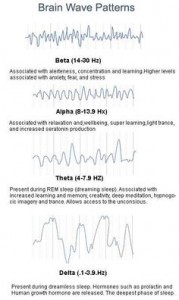I thought it would be interesting to write more about the philosophy of Yoga Nidra Meditation, this profound and powerful method of learning to relax consciously.
The concept of yoga nidra is very ancient in Indian traditions such as Hinduism and Buddhism. In modern times, yoga nidra was experienced by Satyananda Saraswati when he was living with his guru Sivananda Saraswati in Rishikesh. He began studying the tantric scriptures and, after practice, constructed a system of relaxation, which he began popularizing in the mid-20th century.
![]()
He explained yoga nidra as a state of mind between wakefulness and sleep that opened deep phases of the mind, suggesting a connection with the ancient tantric practice called nyasa, whereby Sanskrit mantras are mentally placed within specific body parts, while meditating on each part [of the bodymind]. The form of practice taught by Satyananda includes eight stages [internalisation, sankalpa, rotation of consciousness, breath awareness, manifestation of opposites, creative visualization, sankalpa and externalisation].
Yoga nidra [Sanskrit: योग निद्रा] or yogic sleep is defined as a state of conscious deep sleep. One appears to be sleeping but the unconscious mind is functioning at a deeper level: it is sleep with a trace of deep awareness. In normal sleep we lose track of our self but in yoga nidra, while consciousness of the world is dim and relaxation is deep, there remains an inward lucidity and experiences may be absorbed to be recalled later.
When the body is completely relaxed, we become systematically and increasingly aware of the inner world by following a set of verbal instructions delivered by the instructor. This state of consciousness is different from meditation in which concentration on a single focus is required. In yoga nidra you remain in a state of light pratyahara with four of your senses internalised, that is, withdrawn and only the hearing still connects to the instructions. The yogic goal is to achieve a state called samadhi. In samadhi the mind becomes still. It is a state of being totally aware of the present moment; a one-pointedness of mind.

We often talk about the subjective benefits of regular yoga nidra meditation practice as being helpful with reducing tension and anxiety and the autonomic symptoms of high anxiety such as headache, dizziness, chest pain, palpitations and abdominal discomfort. I have witnessed people, over a 6 week course of practice, become calmer, reduce anxiety medication and generally feel light and brighter, better able to cope with their life circumstances.
Experimental evidence of the existence of a fourth state of unified, transcendental consciousness, which lies in the yoga nidra state at the transition between sensory and sleep consciousness, was first recorded at the Menninger Foundation in Kansas, United States in 1971.
Under the direction of Dr. Elmer Green, researchers used an electroencephalograph to record the brainwave activity of an Indian yogi Swami Rama, while he progressively relaxed his entire physical, mental and emotional structure through the practice of yoga nidra. The swami demonstrated the capacity to enter the various states of consciousness at will, as evidenced by remarkable changes in the electrical activity of his brain.

Upon relaxing himself in the laboratory, he first entered the yoga nidra state, producing 70% alpha wave discharge for a predetermined 5 minute period, simply by imagining an empty blue sky with occasional drifting clouds. Next, Swami Rama entered a state of dreaming sleep which was accompanied by slower theta waves for 75% of the subsequent 5 minute test period. This state, which he later described as being “noisy and unpleasant”, was attained by “stilling the conscious mind and bringing forth the subconscious”. In this state he had the internal experience of desires, ambitions, memories and past images in archetypal form rising sequentially from the subconscious and unconscious with a rush, each archetype occupying his whole awareness.
Finally, the swami entered the state of (usually unconscious) deep sleep, as verified by the emergence of the characteristic pattern of slow rhythm delta waves. However, he remained perfectly aware throughout the entire experimental period. He later recalled the various events which had occurred in the laboratory during the experiment, including all the questions that one of the scientists had asked him during the period of deep delta wave sleep, while his body lay snoring quietly!!
I have personally practiced a variety of meditation techniques over the years to help me cope with the feelings of anxiety and all have proved to be helpful, but when I came across yoga nidra meditation, I was taken to a completely different place of deep and profound relaxation and found my experience of anxiety diminish to almost nothing.
Perhaps, now knowing a little more, you might consider trying this method for yourself? There are many yoga nidra recordings on youtube to explore, or coming to a class might feel the best approach for you, being in a calm, supportive environment, where you can share experiences or not, as you prefer.

Do get in touch if I can help in anyway.
x

